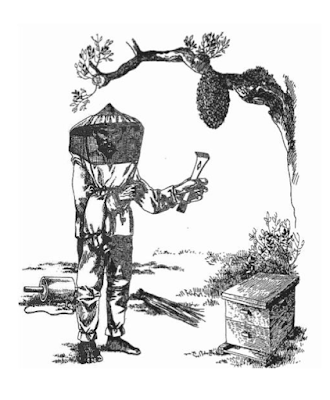A Seasonal Guide for Beekpeeing on Banana Plantations of Hispaniola

Through the Farmer-to-Farmer program, Partners of the Americas has supported beekeepers and honey producers in several countries throughout Latin America and the Caribbean. In October 2016, F2F volunteer Mark Moore traveled to the northwest region of the Dominican Republic to provide hands-on training to banana producers on the development and implementation of apiculture projects for honey production. During the process, he developed a guide to help beekeepers address the specific challenges of keeping bees year-round. Here are some highlights from his guide:
December - February
During the winter months, Mr. Moore suggests the trick is to keep bees in a state of production so they are ready to make honey as early as possible. He also said to build entrance reducers to not only help keep the hive warm, but to prevent neighboring bees from robbing the hive. Mr. Moore ecxplains that as colonies get weak in the winter, stronger neighbors sometimes take advantage of other hives. Mr. Moore also said 2-3 weak colonies can be united or joined to make one strong colony. Finally, Mr. Moore suggests to keep a seasonal calendar to track when honey flow occurs as it may vary from year to year.
 March - July
March - JulyIn March - July, there is a lot of nectar and pollen available and peak honey flow should happend during this time period. This makes it possible to split one stronger hive into two in order to increase the number of colonies. In order to do so, Mr. Moore recommends taking the new hive at least 3-4 km away from the original hive to prevent the bees from returning to their original hive. March through July is also a good time for queen production. Important traits of a good queen include: 1) being a good layer, 2) temperament, and 3) low inclination to swarm. Mr. Moore explains that about 2/3 of bees are lost when they swarm. Therefore, in order to prevent swarms, producers should make sure the brood chamber is not over-crowded and check on colonies at least once a week.
August - November
During this time period, Mr. Moore emphasizes the importance of treating hives for Varroa mites and other pests. He suggests that autumn is the best time to treat hives. He also suggests examining hives on a weekly basis to check for pollen supply, bee population, and condition of the queen and brood. A method to inspect the hive is detailed in the below photo:
For more information on our work in apiculture, please see our other blog posts on beekeeping here: http://farmertofarmer.blogspot.com/search/label/beekeeping


.png)

Comments
Post a Comment